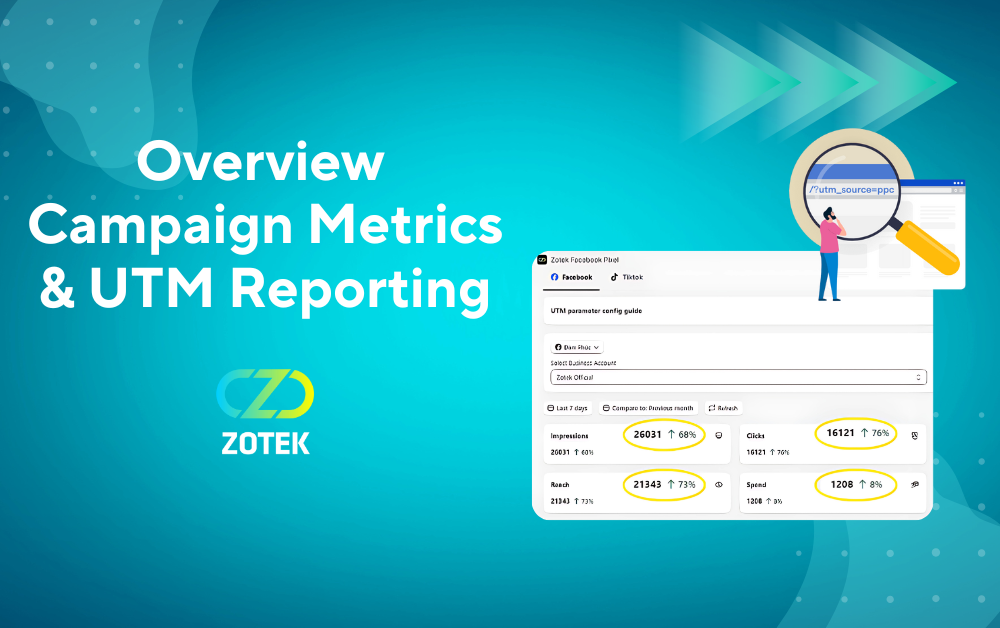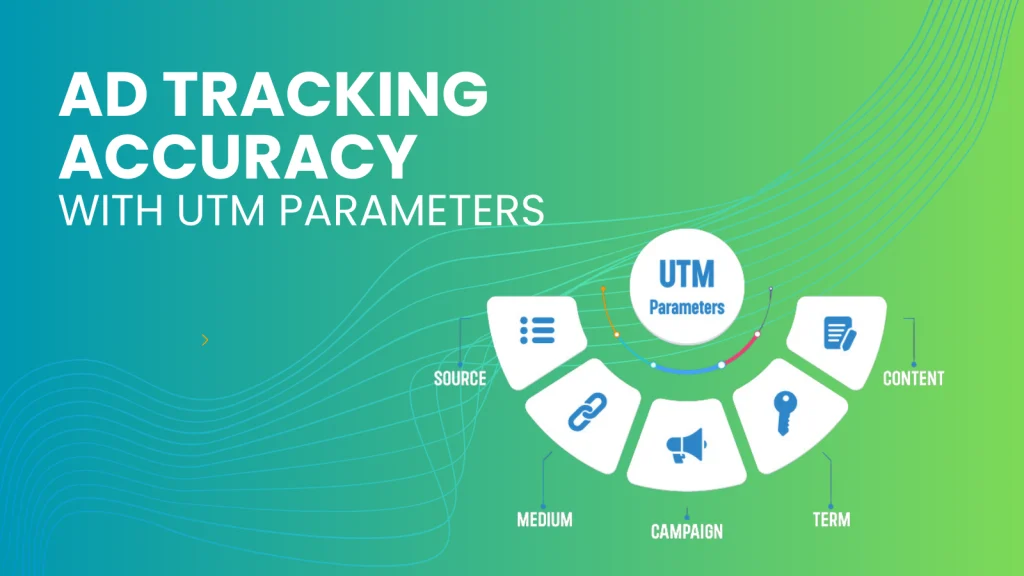
Boost Ad Tracking Accuracy with UTM Parameters
In the fast-evolving digital marketing landscape, accurately tracking and analyzing campaign performance is crucial for optimizing strategies and ensuring effective ROI. One of the most effective tools for achieving precise ad tracking is UTM parameters.
This article aims to delve into the multifaceted utility of UTM parameters, explore how they can be effectively implemented, assess the value they bring through data analysis, and address common challenges encountered in their use.
Table of Contents:
1. Understanding UTM Parameters.
2. Implementing UTM Parameters Effectively.
3. Analyzing Data from UTM Parameters.
4. Common Challenges and Solutions.
Understanding UTM Parameters
Definition of UTM Parameters
UTM (Urchin Tracking Module) parameters are URL add-ons that allow marketers to track the source, medium, and campaign name associated with the links in their digital marketing initiatives. This small fragment of code appended to a URL enables precise tracking of where website traffic originates. For example, a UTM-linked URL like https://example.com/?utm_source=facebook&utm_medium=social&utm_campaign=autumn_sale provides details that are automatically captured and logged by analytics tools like Google Analytics.

Importance in Digital Marketing.
The importance of UTM parameters in digital marketing cannot be understated. They serve multiple critical functions:
- Enhanced Precision: They provide granular data that allows marketers to pinpoint which specific campaigns, social media posts, or emails are driving the most traffic.
- Improved ROI Tracking: By associating UTM parameters with specific campaigns, marketers can calculate the ROI more accurately.
- Cross-Platform Insights: UTMs enable the comparison of performance across various platforms, from social media to email marketing.
- Optimization and Adjustment: They provide the insight needed to tweak ongoing campaigns for better performance.
Basic Components.
Understanding the basic components of UTM parameters is foundational to their effective use. Each parameter has a specific role:
- Source (utm_source): Identifies the platform where the traffic originates, such as Facebook, Google, or a newsletter.
- Medium (utm_medium): Indicates the medium used, like email, social, or CPC (Cost Per Click).
- Campaign (utm_campaign): Names the campaign the link is associated with, such as spring_sale or summer_promo.
- Term (utm_term): Used for paid search to note keywords.
- Content (utm_content): Differentiates similar content or links within the same ad to track which version is more effective.
By combining these parameters, marketers can create a comprehensive and detailed tracking system that reveals insights about user behavior and campaign performance.
Implementing UTM Parameters Effectively
Creating Standard Naming Conventions
To harness the full potential of UTM parameters, it is vital to establish standard naming conventions. Consistency in naming ensures accurate tracking and analysis. For instance, defining a consistent way to refer to sources (e.g., Facebook, Twitter) and mediums (e.g., CPC, email) reduces confusion and allows for clear data aggregation.
Standardized naming conventions help maintain data integrity. Consider a scenario where one campaign is tagged as “fb_ads” while another is tagged as “facebook_ads”; analytics tools might consider these distinct sources, leading to fragmented data. To avoid such discrepancies, spelling, capitalization, and naming schemes should be predefined and followed rigorously.
Using URL Builders
Efficiently implementing UTM parameters can be facilitated through URL builders, tools specifically designed to append UTM parameters to URLs correctly and consistently. Google’s Campaign URL Builder is one of the most popular tools that simplifies this task. Through a user-friendly interface, marketers can input details such as source, medium, and campaign name, and the tool automatically generates a URL with the appropriate UTM parameters.
URL builders minimize human error and ensure that all necessary parameters are included. This process can be standardized across teams to ensure consistency in the campaign tracking process.
Integrating with Analytics Tools
Once UTM parameters are embedded into URLs, integrating them with robust analytics tools, primarily Google Analytics, allows marketers to extract meaningful data. Google Analytics can track and present data associated with UTM parameters, providing insights into traffic sources, user behavior, and conversion rates.
The integration process entails configuring Google Analytics to recognize and categorize UTM-tagged URLs. This can involve setting up specific reports and dashboards that focus on the campaigns tracked through UTM parameters. These custom reports facilitate a granular examination of the campaign performance, enabling optimizations and strategic adjustments.
Analyzing Data from UTM Parameters
Tracking Campaign Performance
With precise data from UTM parameters, marketers can track the performance of various campaigns in real-time. By examining metrics such as click-through rates (CTR), bounce rates, and conversions, they can discern which campaigns are most effective. For example, a UTM-tagged URL used in an email campaign might reveal that a particular subject line significantly boosts open rates and click-through rates compared to others.
Data analysis uncovers patterns and trends that can be leveraged to enhance future campaigns. Imagine a situation where UTM data indicates that social media campaigns targeted at a specific demographic yield higher engagement rates. This insight allows marketers to fine-tune their targeting and messaging for even better results.
Identifying High-Performing Channels
By examining traffic sources via UTM parameters, you can identify which channels drive the most valuable traffic. For example, an analysis might reveal that Instagram ads generate more conversions per dollar spent compared to other social media platforms. This knowledge empowers marketers to allocate budgets more efficiently, focusing on channels that provide the highest return on investment.
Moreover, identifying high-performing channels aids in strategic planning. A brand might discover through UTM analytics that its audience is more engaged on platforms like LinkedIn rather than Facebook, thus shaping future content and ad placement decisions to align with this insight.
Optimizing Marketing Strategies
The ultimate goal of analyzing UTM parameter data is to optimize marketing strategies. Continuous monitoring and adjustment based on UTM data ensure that campaigns remain effective and adaptive to changing market dynamics. For instance, if a particular campaign tag reveals high traffic but low conversions, it may indicate the need for adjustments in the landing page or call-to-action.
Optimized marketing strategies are data-driven, reducing guesswork and enhancing precision. By systematically evaluating UTM data, marketers can execute A/B tests, refine their audience targeting, and experiment with different content formats to discover what resonates best with their audience.
Common Challenges and Solutions
Ensuring Consistent Use
One of the most prevalent challenges in using UTM parameters is ensuring consistent application across all marketing efforts. Without consistency, the data gathered can be fragmented and unreliable, leading to inaccurate insights. To address this issue, it is essential to create comprehensive documentation and train all team members on the standardized use of UTM parameters.
A solution like Zotek Multi Facebook Pixel offers seamless UTM attribution and tracking, making it easier to maintain consistency across all campaigns, ensuring that data remains accurate and actionable.
Avoiding Redundant Parameters
Redundant parameters can clutter data and obscure meaningful insights. For instance, using multiple similar parameters for the same source or medium can split data unnecessarily. To mitigate this, it is crucial to document and review the UTM parameters before deploying them, ensuring no redundant or unnecessary tags are included. Regular audits of UTM parameters and analytics reports can help identify and eliminate redundancy.
With ZoTek’s automated UTM tracking, redundant or conflicting parameters are easily detected and streamlined, ensuring your marketing data remains clean and well-organized.
Addressing Data Privacy Concerns
The use of UTM parameters must comply with data privacy regulations. These regulations mandate transparent data practices and user consent for data tracking activities. Non-compliance can result in severe penalties and damage to brand reputation.
One solution is to anonymize UTM data where possible and ensure that tracking practices are communicated in the website’s privacy policy. Additionally, implementing cookie consent banners that allow users to opt in or out of tracking parameters can help adhere to data privacy regulations while maintaining the ability to gather valuable marketing insights.
Conclusion
UTM parameters are indispensable tools for enhancing ad tracking accuracy, offering detailed insights that bolster digital marketing efforts. From understanding the essential components and implementing UTM parameters effectively to analyzing resultant data and addressing common challenges, this essay has covered the critical aspects of utilizing UTM parameters.
By establishing standard naming conventions, using URL builders, integrating with analytics tools, and solving issues like consistency and redundancy, marketers can harness the full potential of UTM parameters. The data garnered through precise tracking can inform optimization strategies, identify high-performing channels, and ultimately lead to more informed and successful marketing campaigns. In an era where every click can be quantified and analyzed, UTM parameters provide the clarity and control needed to navigate digital marketing’s complex landscape.